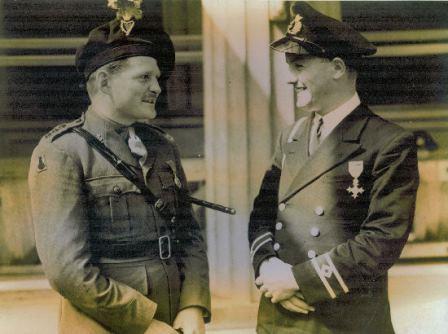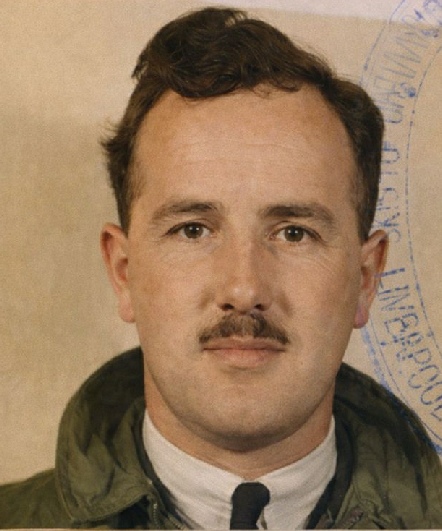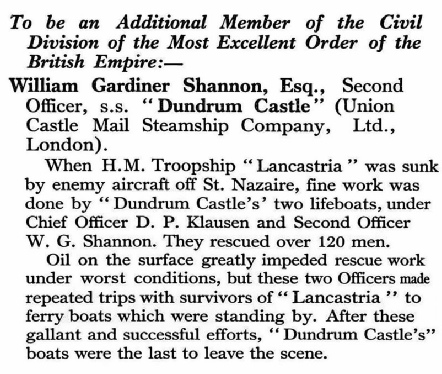The Dundrum Castle had been at St. Nazaire for several days. On board was military cargo for discharge at Dunkirk. Dunkirk as a port of discharge was about to vanish from the map. At St. Nazaire the German planes were flying over. The Dundrum Castle with her A.A. guns joined in the battle. On Monday, June 17th, instructions came that the vessel was to get out of the port at 2 o'clock that afternoon. She was just about to sail when 500 troops and a few civilian refugees were hurriedly put on board. Somewhat delayed the vessel left her berth, proceeded to the lock, and then entered the river, bound for the Channel and shores of Britain. She was to get no further on that terrible afternoon.
It was just after 4 p.m. that German aircraft came over and attacked the shipping in the harbour. In addition to the Dundrum Castle there was a large liner about to leave for England. She was the Lancastria, well-known on the North Atlantic in the days before the war. On board her now were 5,000 British troops, men of the B.E.F. (British Expeditionary Force) lucky to be getting out of France. The Germans scored a direct hit on the Lancastria; the stricken vessel turned slowly over on her side and sank; the water that surrounded her became a mass of blazing oil. 3,000 men perished in the inferno.
At all possible speed the Dundrum Castle made for the scene of the disaster, joining with other craft in such work of rescue as was possible. Two of her lifeboats were manned and sent away, one in charge of Mr. D.P.H. Klasen, Chief Officer, the other in charge of Mr. W.G. Shannon, 2nd Officer. To save many lives was quite impossible, and the work of rescue was slow and painful. The water was thick with fuel oil from the sunken ship, and to drag even a single survivor into the lifeboats took considerable time. The Dundrum Castle's lifeboats were the last to leave this scene of horror, and the crews were exhausted when they got back to their ship. By their efforts over 120 lives were saved. It was not possible for the Dundrum Castle to leave the anchorage at St. Nazaire that night, but at 11 p.m. Captain Williams was signalled by a British destroyer to join up with the next convoy going out. The Dundrum Castle joined the convoy and on June 20th she landed her 500 troops and the refugees in the safety of Southampton.'
I have Mark Vickers to thank for the photographs of William Shannon.
Citation, London Gazette, 23rd August 1940

1940, from William's discharge book.
Nationality: United Kingdom
Rank: Third Officer
Regiment/Service: Merchant Navy
Unit Text: S.S. Gloucester Castle (London)
Age: 32
Date of Death: 15/07/1942
Awards: M B E
Additional information: Son of William and Mary Hamilton Shannon; husband of Moyna V. Shannon, of Wembley Park, Middlesex. Master Mariner, Merchant Navy.
Casualty Type: Commonwealth War Dead
Grave/Memorial Reference: Panel 52. Memorial: TOWER HILL MEMORIAL
MERCHANT SERVICE TOWER HILL MEMORIAL
|
Service Record
|
From
|
To
|
|
Dundrum Castle
2nd Officer
|
1940
|
|
|
Gloucester Castle
3rd Officer
|
|
7/1942
|
|
Killed
|
15 July 1942
|
Aged 32
|
Decorated - 1940
Obituary - 1942
William Gardiner Shannon
MBE











